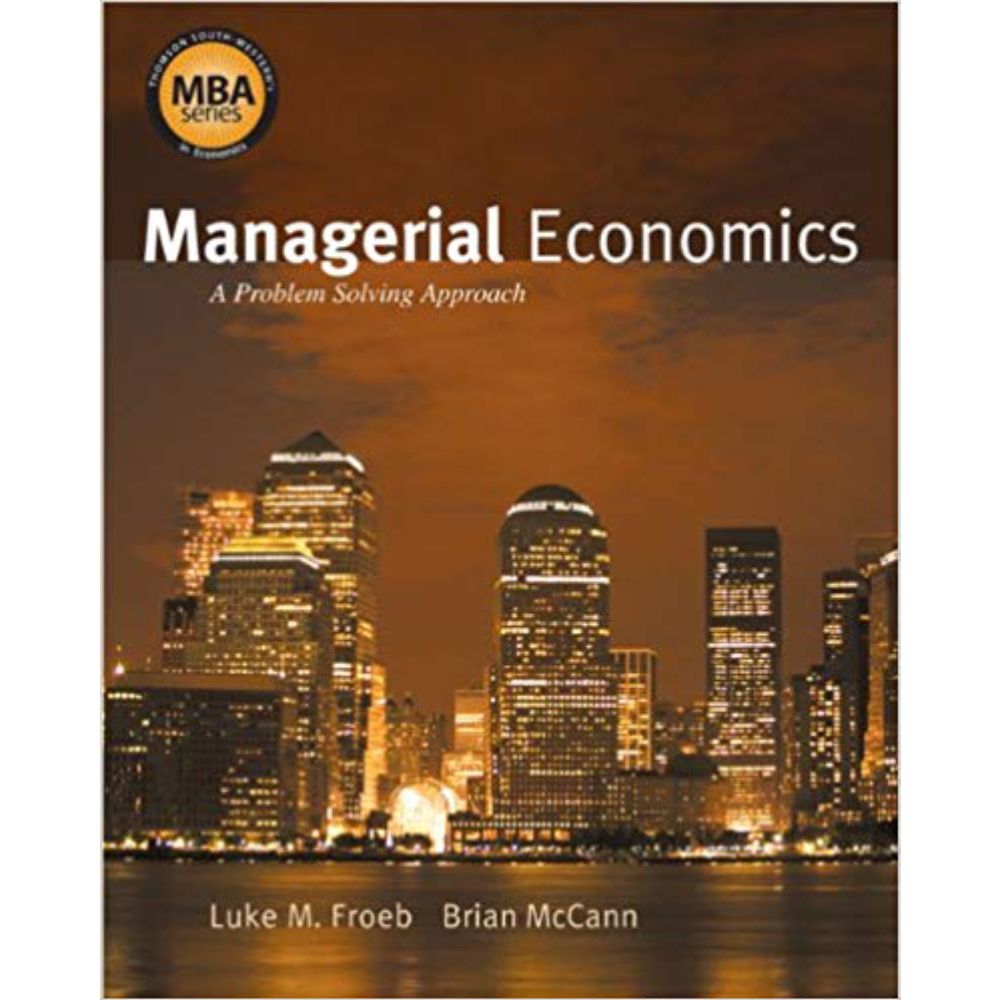Managerial Economics A Problem Solving Approach 1st Edition By Luke M. Froeb – Test Bank
$55.00
Managerial Economics A Problem Solving Approach 1st Edition By Luke M. Froeb – Test Bank
You will receive this product within 24 hours after placing the order
Managerial Economics A Problem Solving Approach 1st Edition by Luke M. Froeb – Test Bank
Pricing with Uncertainty
Relevant chapter: 15
You take a position with a large real estate development company as your first job after graduation. Your first big assignment is to sell an office building – you have been informed the company’s cost into the building (and the bottom line price it is willing to accept) is $400,000. You have identified a likely buyer and you assess that his top price is either $500,000 with a probability of .3, $600,000 with a probability of .5, or $1,000,000 with a probability of .2. You have to commit to a posted price – what price will maximize your profitability?
Answer:
Price at $500,000; sell every time, so expected profit is $100,000
Price at $600,000; sell 70% of time, so expected profit is $140,000 (.7*($600,000-$400,000)
Price at $1,000,000; sell 20% of time, so expected profit is $120,000 (.2*($1,000,000-$400,000)
Price at $600,000 to maximize profit
Predicting Auction Outcomes
Relevant chapter: 15
You are running an oral auction, and you know the six bidders place the following values on the auction item:
Joe: $150 Jack: $149 Jim:$148
Jane: $147 Jill: $146 Jean: $145
What winning bid should you expect? If the winning bid turns out to be $146.01 because of a bid cartel, which bidders must have participated?
Answer:
Winning bid = $149; Cartel = Joe, Jack, Jim, Jane
Job Auction
Relevant chapter: 15 & 16
When China reformed state-owned enterprises, it tried a new approach to choosing managers: it put managerial jobs up for auction. The bids for the jobs consisted of promises of future profit streams that the managers would generate and then deliver to the state. A simple regression analysis showed that in cases where the incumbent manager was the winning bidder, firm productivity tended to increase dramatically. When outside bidders won, there was little productivity improvement. How can we explain this surprising result?
[The above question is inspired by McMillan, J. (1996). Games, Strategies, and Managers: How Managers Can Use Game Theory to Make Better Business Decisions. New York: Oxford University Press, USA]
Answer:
Adverse selection: Outside bidders will win only when the informed bidders (incumbent managers) think the job is not worth very much. Thus winning is really bad news. This is analogous to the winners’ curse—in fact the winner’s curse can be thought of as a type of adverse selection.
Insuring Dentists
Relevant chapter: 16
You start an insurance company as your first entrepreneurial venture after graduation. Your main product line is malpractice insurance for dentists. After exhaustive research, you learn that settling malpractice claims against careful dentists costs $2,000 and settling malpractice claims against reckless dentists costs $7,500. Individual dentists know whether they are reckless or careful, and your research shows that approximately 20% of dentists are reckless. How much do should you charge for malpractice insurance to break even? Why?
Answer:
$7,500 – this is an adverse selection issue. You have to assume that only the reckless dentists are going to purchase the insurance.
AOL Rent
Relevant chapter: 16 & 17
In 1997 America Online (AOL) started charging “rent” (a fixed fee for a “space” in its electronic store) to its electronic retailers, instead of a share of their sales revenue.
a. What is the adverse selection problem that is solved by this change?
b. What is the moral hazard problem that is solved by this change?
In answering this question, identify distinct moral hazard and adverse selection problems and the source of the information asymmetry. Describe only the problems, not the solutions. Assume also that AOL can easily monitor sales by its retailers so there is no way to “cheat” on the sales commission by, for example, diverting sales from AOL to another outlet.
Answer:
a. Retailers have private information about the profitability of their products. Those who know that their sales will be high are less likely to advertise because they must share the high revenue with AOL. Those whose sales are likely to be low are more likely to advertise because they will find it less expensive to advertise. The sales “commission” attracts the wrong kind of retailer.
b. A sales commission (revenue-sharing) reduces the incentive of retailers to work hard, i.e., it leads to shirking.
Alliance Performance
Relevant chapter: 16 & 17
Research has shown that the majority of strategic alliance joint ventures between companies are not successful. Provide an adverse selection and moral hazard explanation for this lack of success.
Answer:
Adverse selection: The really good companies are less likely to need strategic alliances (or have already entered them). The remaining ones looking are the less attractive partners.
Moral hazard: Once an alliance is entered, each partner has some incentive to shirk in an attempt to free ride off the work of the other.
Botox and Migraines
Relevant chapter: 16 & 17
Botulinum toxin, marketed under the brand name “Botox” is a drug that paralyzes muscles into which it is injected. It is one of the few promising treatments for migraine headaches, which affect about 10% of the population. Migraine headaches are debilitating, but there is no objective way to diagnose them. Thus migraine headaches are relatively easy to fake. Botox is also very popular as a cosmetic treatment to get rid of wrinkles. If you are a small business, should you offer insurance coverage for Botox treatments for migraine headaches? (HINT: moral hazard.)
Answer:
If you cover migraine headaches, your employees will begin faking migraine headaches in order to get cosmetic treatments of Botox. This will raise the cost of insurance and subsidize Botox treatments. This means you are purchasing treatments that are worth less to employees than they cost. Don’t offer coverage.
Student Evaluations
Relevant chapter: 16 & 17
Universities ask students to complete evaluations of professor performance at the end of classes. Provide both an adverse selection explanation and a separate moral hazard explanation for the practice and identify information asymmetry.
Answer:
Moral hazard: Without the evaluations, professors may shirk after they have been hired.
Adverse selection: if professors know they are going to be evaluated based on student evaluations, professors who get good student evaluations are more likely to be attracted to the university.
The asymmetry exists between the professor and the university administration that must evaluate him or her.
Wal-Mart Insurance
Relevant chapter: 16 & 17
In the Oct 29, 2005 NY Times Article, Wal-mart’s Health Care Struggle is Corporate America’s too, an Internal Wal-Mart Memo, suggested redefining jobs to require physical activity, and to offer health care insurance plans that allowed workers who have low medical costs to spend the unused benefits on other items, like housing or education. Give an adverse selection explanation and a moral hazard explanation of how these actions can help reduce Wal-Mart’s health care costs.
Answer:
The adverse selection problem (pre contractual, hidden information) is that employees who use a lot of medical care are more likely to take jobs at companies that offer generous medical care compensation. Redefining jobs to include physical activity would discourage job applicants who cannot do physical labor, and are likely to be sicker. And letting employees spend the unused portion of health care benefits would encourage healthier job applicants because they can earn more at Wal-Mart relative to a company that does not reward them for not using their health care benefits.











Reviews
There are no reviews yet.